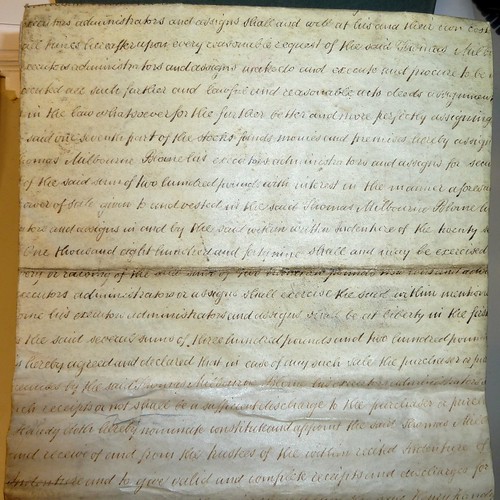This post is still in progress, at the moment it's a lightly marked up copy of my full form speech draft of this section. I'll edit it at some point, but for now at least it's up :)
Series intro
The House of Pain?
The first time I read the manifesto, well... [reverie]...
Who here has read the manifesto? Can you remember the first time you read it?
"we are uncovering better ways of developing software by doing it and helping others do it."
"Through this work we have come to value:"
Did you laugh when you read "working software over comprehensive documentation"?
Did you take a hopeful breath when you read "individuals and interactions over processes and tools"?
Did you shake your head ruefully at: "customer collaboration at contract negotiation"?
Or feel frustrated and trapped at "responding to change over following a plan"?
Maybe you felt exactly the opposite?
Why is this first encounter with the manifesto such an emotional one?
Each of these statements contains within it a tension, between open and free on the the one hand and shut and trapped on the other.
[L]
Four Walls
We can view these things on the right as walls drawn in on a floorplan for an engagement. We have a choice how we build those walls.
There are two extremes:
If we choose to build rigid solid, safe, fear-based, spike encrusted walls... we can build ourselves an amazing safe impenetrable, protected ... prison. And live in that prison for months, or years, walking around in the prison yard, feeling frustrated everytime the walls get in the way. But not really knowing what is wrong [ like neo in the matrix]
If we choose to eschew, to disregard, walls entirely, we stand naked in the elements, without a roof over our heads and can end up wandering aimlessly in the wilderness. Like .. hippies flolloping on the hills of woodstock, hey it's fun, it's like cool, um, like what now? Of course, some well knit teams of marines can roam this wilderness, but even they long to have a roof over their heads every now and then.
As neither of these is too attractive, what do we do?
The Buddhists have a concept of right view: "to recognise our ignorance and humbly seek the middle path."
Walking through walls
[DL]
Very philosophical, Lets make that more real: Riaan goes to visit his friend Lenny at work and starts to notice all the same patterns, but then... someone walks through a wall!
What? You can't just change the scope?
You fixed a bug without logging it?
That guy just walked through a wall!
[gropes around]
"Hey, you have doors"
Lenny looks at Riaan long and hard and says, "Uh, yeah, we can walk through walls here." Then to rub it in: "Sometimes we don't get to actually walk through the wall, but at least we can see through it.. we call this a window."
A False Dichotomy
[DC]
So, these walls can work for us how..
If we look back at the manifesto:
Individuals and interactions over processes and tools
Working software over comprehensive documentation
Customer collaboration over contract negotiation
Responding to change over sticking to a plan
A conclusion it that it is left or right. Or that we have to tread some sort of compromise between the two.
This is a false dichotomy.
[long pause]
Door and Window Makers
[C]
The two don't necessarily contradict. The things on the right are walls, and if built correctly can support, facilitate and improve the flow of things on the left.
The problem is the things on the right are often more tangible, sellable, productisable. We can really get lost in processes, tools, contract negotiation, plans, and documentation when dealing with customer. And we can build walls that disregard and limit the things on the left.
This is why we have to keep these values in mind at every turn while designing and improving our houses.
Scrum, xp and friends contain frameworks, patterns and methodologies of getting through or over walls, And sometimes.. a wrecking ball, sometimes an idea, and sometimes designs for doors and windows that we can build into these walls.
History Lesson
[UR, sit] [history lesson] snowbird, light, xp scrum, fowler on head, cockburn: lightweight lightweight.
Here I related the history of the manifesto, particularly that the manifesto is the meeting of the minds of the door and window makers, who sought to share and find the essence of their door and window patterns.
Alignment
The key to achieving success in all of this is recognising our values, recognising that we share those values [look SR] with the client, and making sure that our decisions to build are informed by our shared values.
[DR]
This is known as alignment. Long term relationships are built on alignment.
In the words of Seth Godin:
"Alignment isn't something you say. It's something you do. Alignment is demonstrated when you make the tough calls, when you see if the thing that matters the most to you is also the thing that matters the most to the other person."
It's a search engine wanting to give you search results as much as you want to get them.
Or a holistic market that wants to give you healthy food as much as you want to buy it.
Or a software company that wants to give you great product as much as you want to buy it.
And so?
[C]
So how does this relate to contracting? We now have some background to how I think about these agile values and can now use this foundation to deliver some of our own medicine to the values. Then I'll show you what we do at IL and the financial bits.





















